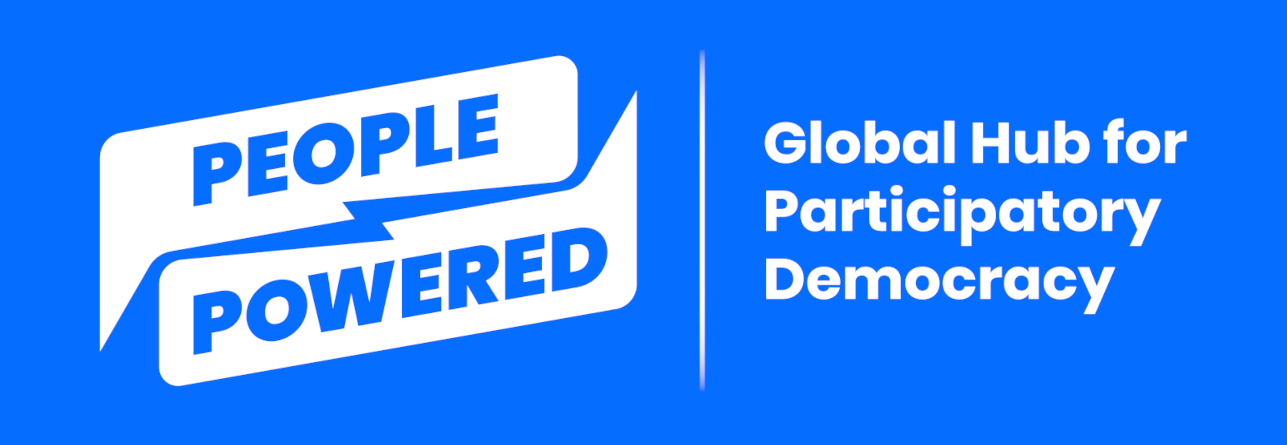Introduction
/Introduction
By Matt Stempeck
In the past decade, it has become increasingly common to engage citizens in various aspects of government via online platforms. In fact, in the release of their most recent data, the publishers of the PB Atlas reported an “accelerating trend toward the digitalization of participatory budgeting,” spurred on by the COVID pandemic.
To satisfy this demand, several comprehensive digital participation platforms have emerged. They help governments, civil society groups, and other institutions engage residents in all types and stages of participatory processes, ranging from planning and budgeting to citizens’ assemblies and the drafting of legislation.
While we often think of such technological platforms in the context of advanced democracies, they have been used to facilitate participatory decision-making in a wide variety of contexts. At their best, platforms enable decision-makers or communities to manage:
Community and stakeholder engagement.
Collective deliberation and decision-making.
Public communication.
Project tracking and monitoring.
Internal coordination.
If you are looking to engage your community through a digital platform, this guide is for you. It explains what they are and shows you how to choose, set up, and run them. We've reviewed hundreds of participatory democracy tools and platforms, and this guide shares a limited subset for your consideration (see our Digital Participation Platforms Matrix).
Who this report is for
We wrote this guide for anyone looking to connect people to power in their community--whether they be from local government, a civic group, or an organization. We pay extra attention to the experiences of those in local government, because that's a key context through which people can exert power.
While there's an ever-growing number of government- and democracy-related technologies, this report is focused on those designed to support collective decision-making and deliberation. To narrow down the diverse array of participation-enabling technologies, we focus on platforms that offer a variety of engagement options instead of single-purpose tools. We're most interested in platforms specifically designed to facilitate meaningful participation, although we acknowledge that many participatory processes successfully use other digital products, like mobile chat and online document sharing. We also limit our discussion to the platforms that anyone can download or to which they can subscribe, rather than limited-availability offerings. (Subscriptions are usually provided via Software as a Service models, in which the platform provider hosts the software on behalf of the customer.) To help readers looking to make a selection, we've only included actively maintained options in this review, although hard-won lessons from now-defunct digital platforms are woven throughout this report.
Context is everything, so we attempt to address considerations for a variety of geographic and political situations around the globe. It’s also important to reiterate that we focus on platforms that help public officials and civil society groups include members of the public in actual decision-making. There are many digital tools that allow institutions to consult their communities, or to report specific issues to governments, but it is the mission of People Powered to expand community members’ power beyond providing input or voting for candidates. Thus, this guide does not cover political advocacy platforms, internal government tech tools, or issue-reporting apps. Participation is only the first step toward people power; citizen engagement must lead to action.
Building people power requires connecting people to one another. Even the best governments and executive teams change over time due to term limits and turnover. For this reason, we also pay close attention to whether people can self-organize and build relationships on these platforms. For example, some platforms let people form groups and hold meetings without government approval. This guide does not cover platforms that treat participants as islands, and instead focuses on those through which people can interact with one another.
How to use this guide
This is a long, very detailed guide! It is not meant to be read from start to finish, in the order in which it is presented. It would be overwhelming! Review the table of contents, choose the sections that seem most relevant to the stage you are at in your project, the questions you are pondering, the challenges you face, etc. Then drop in on them, skim the contents, determine if they cover the information you most need, then settle in and read! Later, as you progress or encounter new issues, you can re-read the content and/or select other sections to review and discuss. Don’t forget to take notes, and send us your feedback!
Methodology
The writer retained to translate this body of knowledge into words, Matt Stempeck, curates the Civic Tech Field Guide, a global catalog of civic engagement tools. In that role, he closely follows the growing field of participation platforms. Thus, this guide benefited from his years of research into digital participation platforms. It builds upon previous research conducted for the Organization for Economic Cooperation and Development (OECD) and Civic Hall. In addition, the guide is informed by extensive secondary research gathered from participatory democracy communities, as well as by interviews with platform developers, hosts, and users.
Acknowledgements
We would like to thank the work team for the Digital Participation Platforms Guide and the Technology Review Committee for their input and feedback. In particular, we want to recognize Alberto Ford, Diana Dajer, Mustapha Khamissa, Kelly McBride, Melissa Zisengwe, Anastasia Fadeeva, Katya Petrikevich, Kayla Knight, Dimitri Lemaire, Stefano Stortone, and Greta Ríos. The primary author of this guide, Matt Stempeck, would like to thank Clara Bois, Nikhil Kumar, Josh Lerner, and Pam Bailey from the People Powered team for their input, resources, and guidance.
In addition, we are grateful to the digital participation platform developers and administrators who shared their expertise and perspective with us in interviews. An immense thank you goes to Rapudo Hawi of Kijiji Yeetu (Kenya), Sofía Corona of Code for All Network (Mexico), Jonathan Piron of Particitiz (Belgium), Colombina Schaeffer of Ciudadanía Inteligente (Chile), Mateusz Wojcieszak of Fundacja Pole Dialogu (Poland), Ming Zhuang of Social Equity and Participation Center (China), Diana Dajer, former Director of the Institute of Studies of the Public Ministry, Bogotá (Colombia), Margo Loor of CitizenOS (Estonia), Eunmi Hwang, Ohyeon Kwon, Jisun Song, and HyunSuk Hwang of Parti Co-op (South Korea), and Denique Souta of Slashroots (Jamaica).
Lastly, we are grateful for the financial support of the National Endowment for Democracy, an independent, nonprofit foundation dedicated to the growth and strengthening of democratic institutions around the world, and the International Republican Institute, a nonpartisan, nonprofit organization committed to advancing freedom and democracy worldwide.
Sample citation: Stempeck, M. (2022). Guide to Digital Participation Platforms: When to Use Them, How to Choose & Tips for Maximum Results. People Powered.



